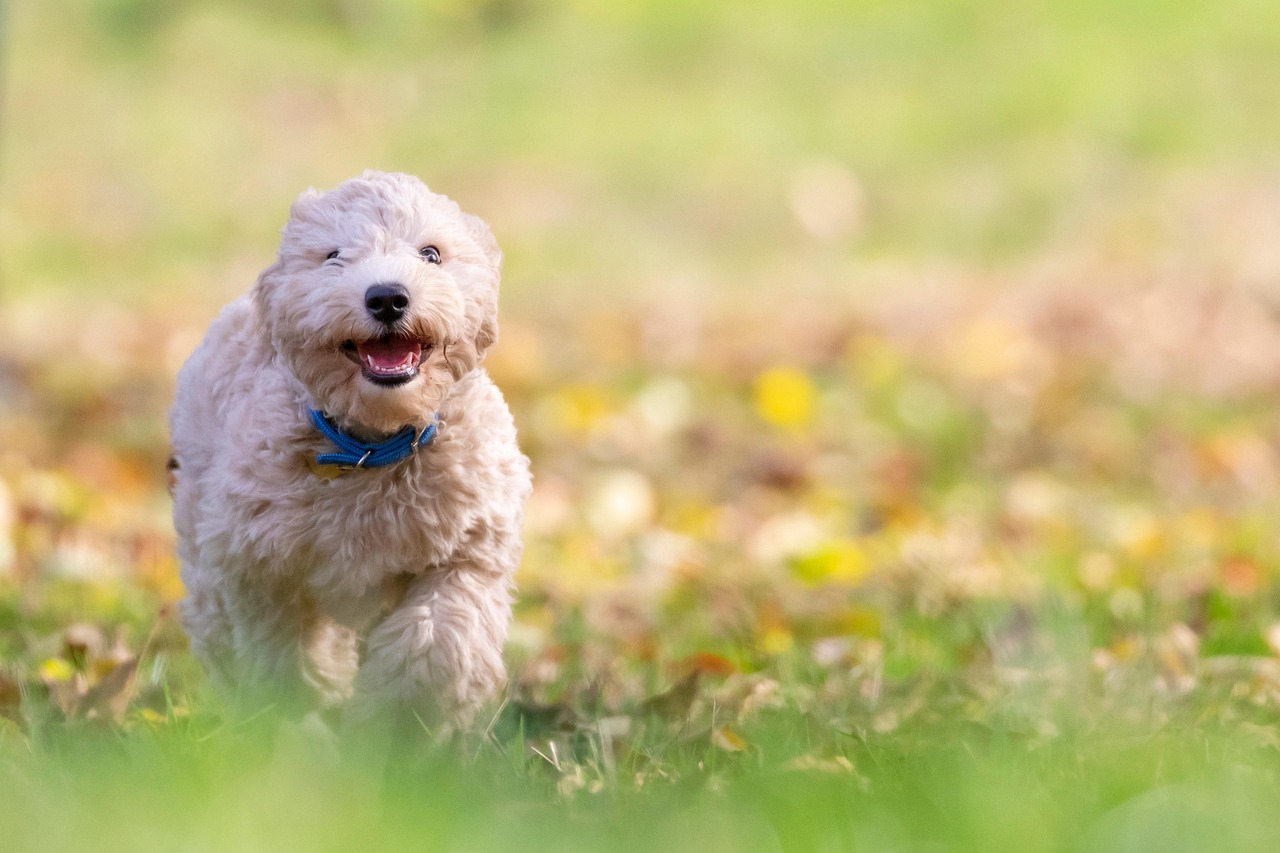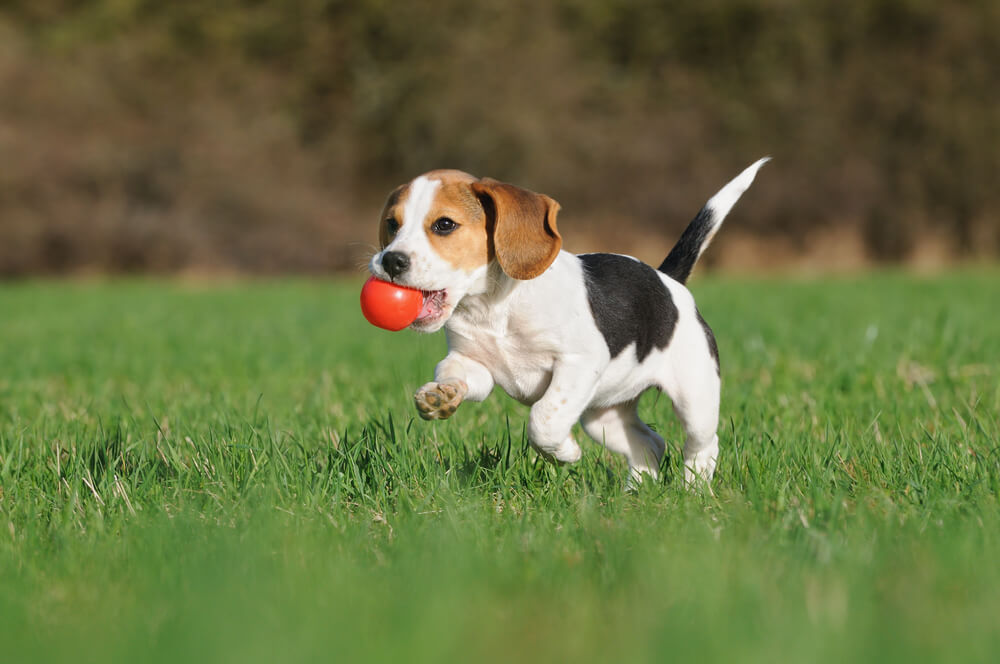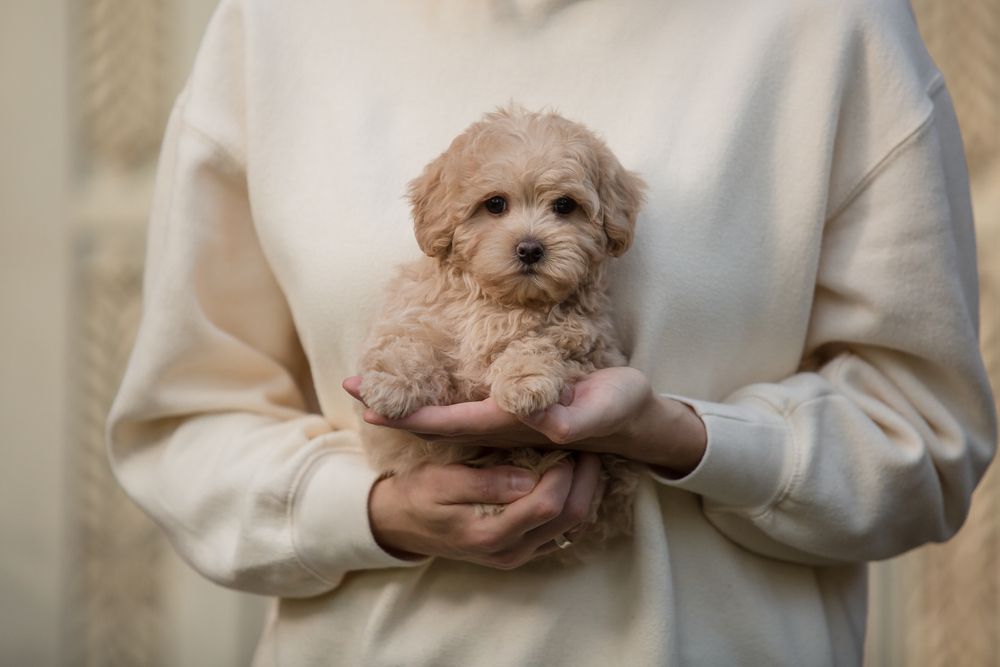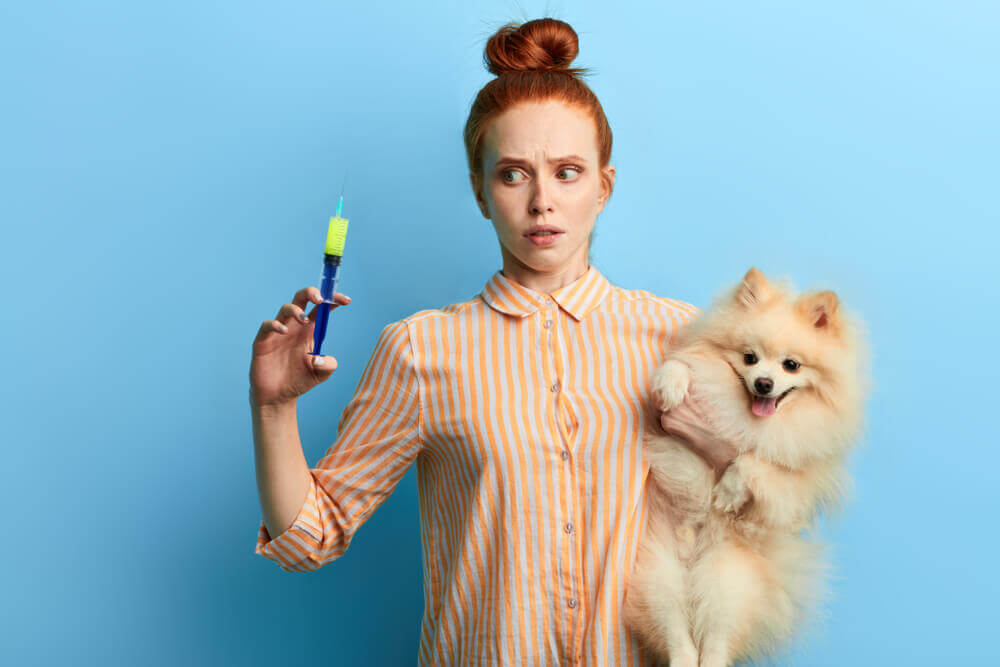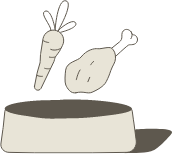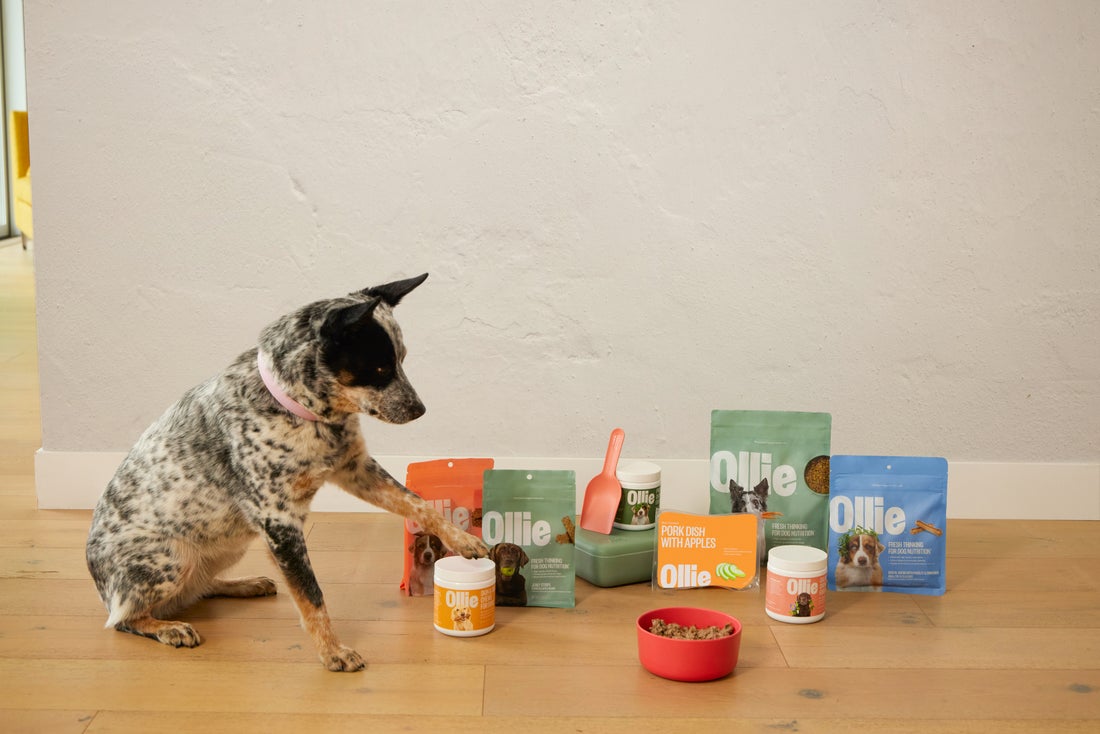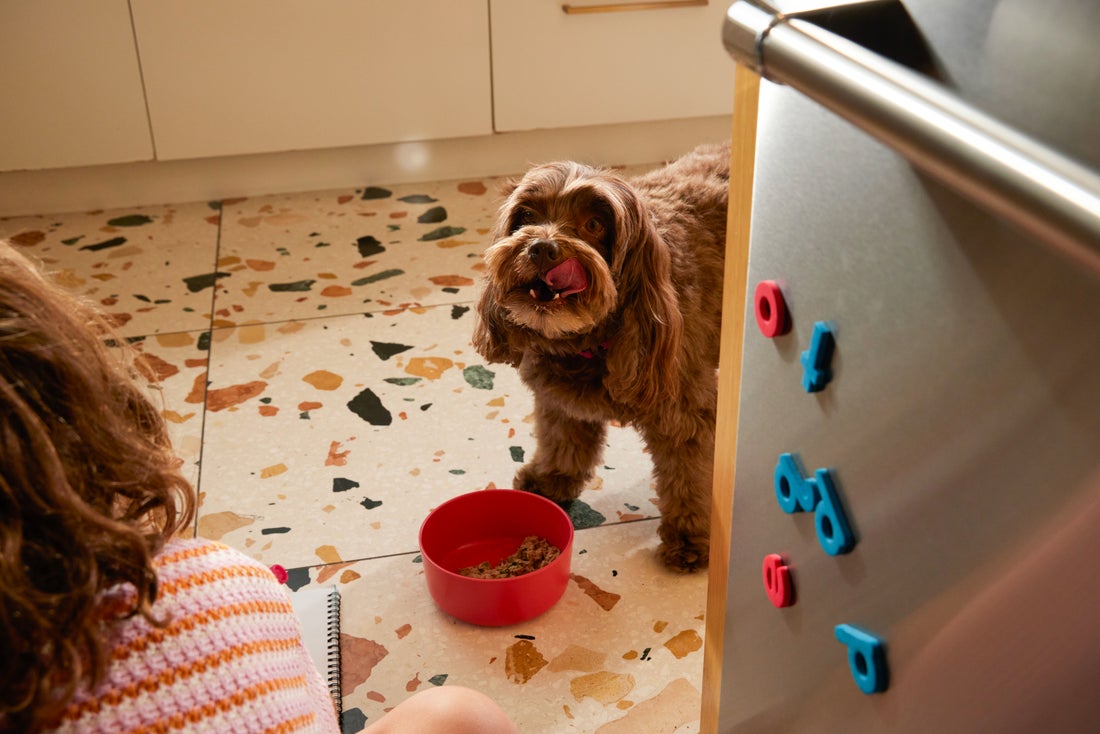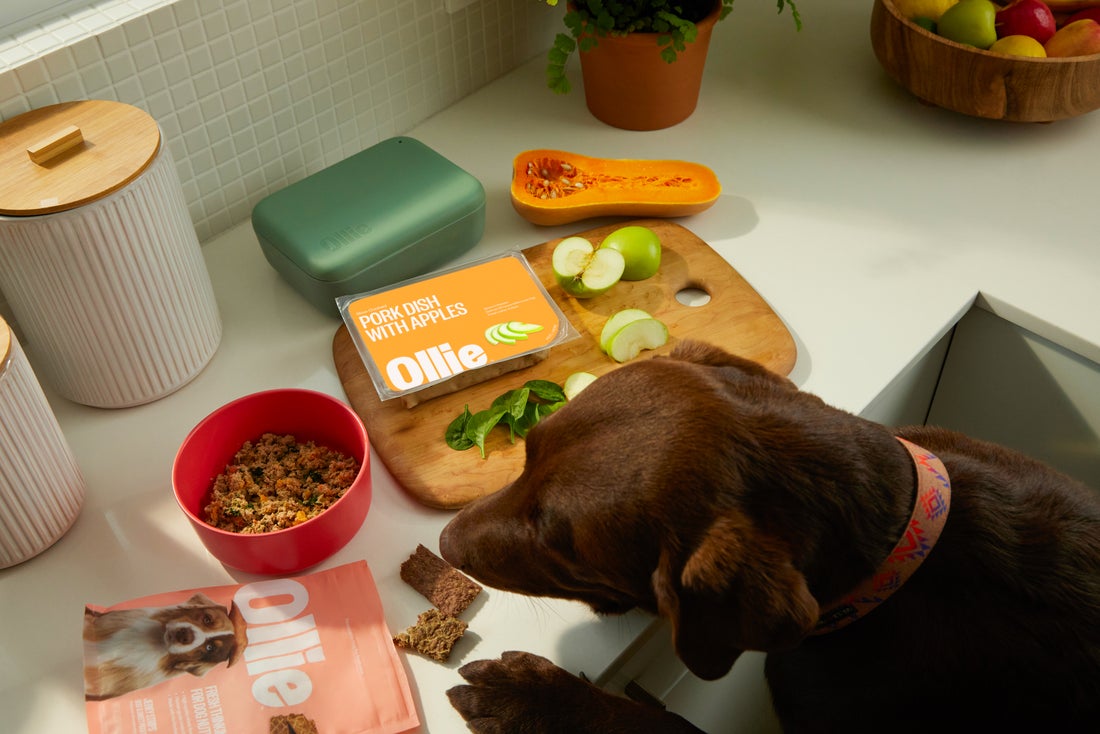Hey Ollie blog readers! We’re offering you an exclusive 60% OFF your starter box! Try now!
Let’s be honest, picking up poop is part of the gig when you have a dog. And while most of us glance and move on, sometimes the color stops us in our tracks. Yellow dog poop can do that.
If you’re asking, “Why is my dog’s poop yellow?”, you’re not alone. It’s one of the more surprising changes to spot, especially if it looks bright yellow, mustard-toned, or even greasy. While one odd poop isn’t always a big deal, consistently yellow stool can signal a few different things, from food sensitivities to bile issues to something more serious brewing in the gut.
The key is knowing what’s normal, when to wait, and when to call your vet. In this guide, we’ll walk through what yellow poop means in dogs, why it happens, when it’s a problem, and how to help your dog feel better, starting with what’s going in their bowl. For dogs with sensitive stomachs or irregular poop, Ollie dog food can make a big difference. We’ll explain why as we go.
What Healthy Dog Poop Should Look Like
Before we get into the yellow zone, it helps to know what’s normal when it comes to dog poop.
Healthy stool typically looks:
- Medium to dark brown in color
- Firm but not too hard
- Moist and log-shaped, not crumbly or sticky
- Free from mucus, blood, or undigested food
The brown color comes from bile, a fluid made by the liver that helps digest fat. After bile does its job in the intestines, it gets processed into a pigment that turns stool brown. So when poop turns yellow, it usually means something interrupted that process.
It could be moving through the intestines too fast (not giving bile enough time to break down), or your dog might not be making enough bile to begin with. Either way, yellow stool is your dog’s way of saying something’s off, and it’s time to pay attention.
One simple way to promote consistent, easy-to-read poop? Feed meals that are easy to digest and gentle on the gut. That’s why Ollie fresh food recipes focus on real, whole ingredients and skip the hard-to-process fillers that can mess with digestion.
Common Causes of Yellow Dog Poop
When you notice your dog’s poop has a yellowish tint, the reason can be as simple as what they ate, or something deeper going on inside. Its worth noting that dog poop can look more yellow indoors or on certain surfaces. If in doubt, check it in natural daylight.
Let’s break down the most common reasons your dog’s stool might be yellow, from minor to more serious.
- Mild Digestive Upset
Dogs have sensitive stomachs. Even a small change, like a new treat, extra table scrap, or sudden stress, can cause yellow dog poop for a day or two. If the poop is still formed and your dog’s acting normal, this is usually nothing to panic about.
- Diet or Food Intolerance
Foods that are rich in fat or poorly digested (like low-quality kibble, dairy, or greasy snacks) can irritate the gut. That irritation may cause poop to pass too quickly, before bile fully breaks down, resulting in yellowish dog poop. Dogs with sensitive stomachs may need a cleaner, simpler diet, like Ollie fresh meals, to avoid flare-ups.
- Parasites or Mild Infections
Giardia and other parasites can trigger yellow diarrhea in dogs, especially in younger pups. These stools are usually loose, smelly, and may include mucus. It’s more common after exposure to contaminated water or other infected dogs.
- Bile Duct or Liver Issues
Since bile is what gives poop its normal brown color, a reduction in natural flow, from liver disease, gallbladder issues, or blocked bile ducts, can turn stool pale yellow or even clay-colored. This is usually paired with other symptoms like loss of appetite, vomiting, or yellowing of the eyes (jaundice).
- Pancreatic or GI Disorders
Pancreatitis, inflammatory bowel disease (IBD), or a condition called exocrine pancreatic insufficiency (EPI), where the body doesn’t make enough digestive enzymes, can all interfere with digestion and result in yellow, greasy, or foul-smelling stool. These conditions often come with weight loss or frequent diarrhea.
Recognizing the cause helps you take the right next step. Mild cases may resolve with rest and a reset, but if yellow poop lingers, it’s time to dig deeper.
When Yellow Dog Poop Is a Sign of Serious Trouble
A one-off yellow poop usually isn’t something to lose sleep over. But if your dog’s stool keeps showing up yellow, or you notice other symptoms alongside it, it could mean something more serious is going on.
Here’s when yellow dog poop should raise a red flag:
It’s Ongoing
If you’re seeing yellowish dog poop for more than 24–48 hours, or it’s happened multiple times in a week, don’t ignore it. Ongoing color changes can signal issues in the liver, pancreas, or digestive tract that need testing and treatment.
Your Puppy Has Yellow Poop
Yellow puppy poop is never something to brush off. Puppies are still developing strong immune systems and are more vulnerable to parasites, viruses, or dietary upsets. If your pup’s poop is loose and yellow, especially with vomiting or low energy, call the vet right away.
It’s Diarrhea or Greasy
Yellow diarrhea in dogs or poop that’s greasy, shiny, or foul-smelling can be a symptom of:
- Giardia or other parasites
- Pancreatic problems (like EPI)
- Liver or gallbladder disease
- Food allergies or IBD
Other Symptoms Show Up
Yellow stool isn’t usually the only clue. Keep an eye out for:
- Loss of appetite
- Vomiting or nausea
- Lethargy
- Weight loss
- Yellowing of the eyes or gums (jaundice)
- Bloating or abdominal discomfort
If any of these show up with yellow stool, your dog isn’t just having an off day—they likely need a vet’s help. And the sooner you act, the easier treatment tends to be.
When to Call the Vet and What to Expect
So, how do you know when to ride it out, or pick up the phone? If your dog’s yellow stool is happening more than once, looks strange, or is paired with other symptoms, your vet should take a look.
Here’s when to call:
- Yellow poop shows up more than twice in 48 hours
- Poop is liquid, greasy, or foul-smelling
- There’s vomiting, loss of appetite, or lethargy
- You see yellow diarrhea in a puppy
- You spot mucus, worms, or blood mixed in
What the Vet Might Do
Once you’re in the clinic, your vet will likely ask:
- What your dog ate recently
- If you’ve changed foods or treats
- Stool frequency, color, and consistency
- Any other behavior changes
Bringing a fresh stool sample can speed things up. By bringing a fresh stool sample to your vet you can speed up the diagnose process significantly and help your pup get started on a potential treatment strategy.
From there, they might recommend:
- Fecal exam to check for parasites like Giardia
- Blood tests to evaluate liver and pancreatic enzymes
- Ultrasound or X-ray if bile duct or organ issues are suspected
- Elimination diet if food allergies or intolerances are suspected
While yellow stool can feel alarming, many causes are treatable once identified. And if diet is part of the issue, switching to something gentle and whole-food-based, like Ollie fresh meals, can give your dog’s digestive system the reset it needs.
Diet, Treatment & Management
If your dog’s yellow stool is tied to a mild upset or food sensitivity, there’s a good chance you can manage it with the right diet and routine. For more serious cases, your vet will guide treatment. Either way, recovery starts with supporting your dog’s digestion.
Start with Food
Diet is one of the most common (and fixable) causes of yellow dog poop. Switching to a bland diet or a high-quality, digestible food often helps.
- For short-term support, your vet may recommend boiled chicken and plain rice.
- For long-term gut health, foods that skip fillers and include real meat, fiber-rich veggies, and natural fats can make a huge difference.
Ollie fresh meals are ideal for sensitive stomachs. They’re gently cooked, nutrient-rich, and free from artificial ingredients that can irritate the gut.
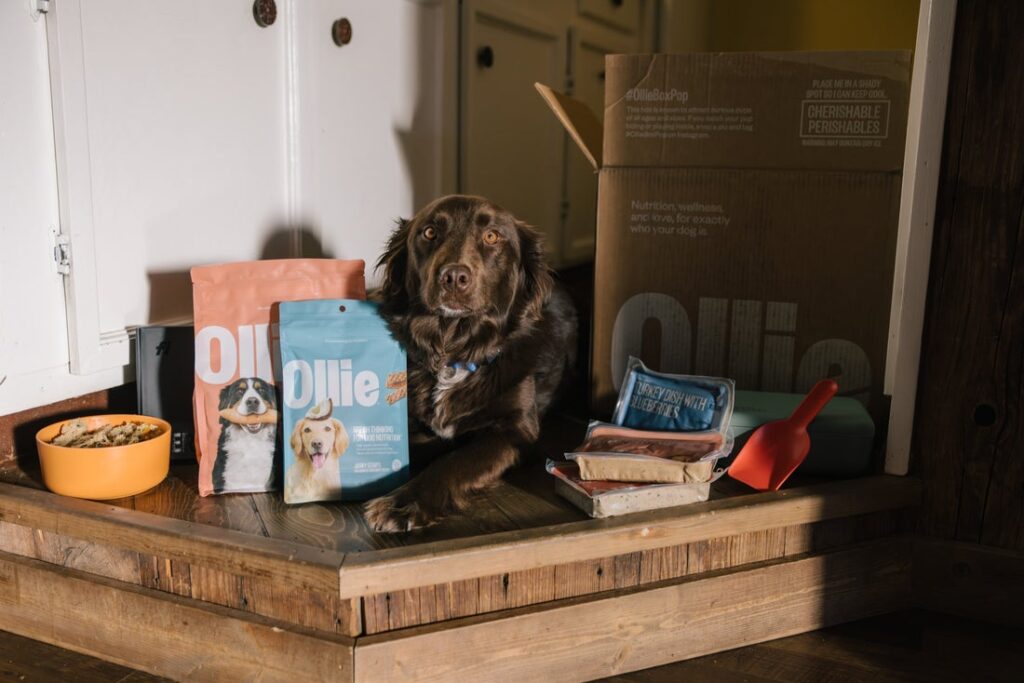
Medications
If a medical condition is behind the yellow stool, your vet might prescribe:
- Dewormers or antiparasitics
- Antibiotics or anti-inflammatory meds
- Enzyme supplements (especially for pancreatic issues)
- Liver support supplements if bile production is involved
Food Trials
For suspected food intolerances or allergies, your vet may guide you through an elimination diet. This means feeding one protein and one carb for several weeks and slowly reintroducing ingredients to see what triggers symptoms.
Routine & Prevention
Even after treatment, digestive issues can return without the right care:
- Stick to a consistent feeding schedule
- Avoid fatty scraps, rich treats, or rapid diet changes
- Offer plenty of water and exercise
- Transition new foods slowly—over at least 7–10 days
Supporting your dog’s gut with nutritious, simple meals can help prevent yellowish poop from making a comeback.
Safe Home Care & Prevention Tips
While you can’t prevent every stomach quirk, there’s a lot you can do at home to reduce the chances of your dog developing yellow stool again. These tips are simple but effective, and they can make a big difference for sensitive pups.
Stick to a Consistent Diet
Dogs thrive on routine. Changing their food too fast, offering too many treats, or sneaking them table scraps can all upset the balance in their gut.
If you’re switching foods, always go slow, transition over at least 7–10 days. And when in doubt, go back to basics with something easy on the stomach, like Ollie gently cooked recipes.
Keep Hydration Up
Dehydration can make digestion sluggish, especially if your dog is recovering from diarrhea. Always make sure your pup has access to fresh, clean water, and encourage drinking during hot days or after activity.
Watch What They Eat Outside
If your dog likes to scavenge, yellow poop could come from something they snagged on a walk. Training a solid “leave it” command and supervising outdoor time can help avoid accidental snack attacks.
Track the Trends
Keeping a mental (or even written) log of your dog’s poop color, consistency, and frequency helps spot patterns before they become problems. If you see yellow poop more than once, you’ll have good info ready for your vet.
Prevent Parasites
Stay on top of flea and parasite prevention, especially if your dog visits parks or drinks from puddles. Parasites like Giardia are a common cause of yellow diarrhea in dogs, and prevention is easier than treatment.
FAQs About Yellow Dog Poop
What does yellow dog poop mean?
Yellow poop usually means something is affecting your dog’s digestion. It could be something simple, like a new food or a mild stomach upset, or something more serious like a liver or gallbladder issue. If yellow poop sticks around for more than a day or two, it’s time to talk to your vet.
Why is my puppy’s poop yellow?
Yellow puppy poop can be a sign of infection, parasites, or food that’s not agreeing with their developing system. Because puppies are more sensitive, it’s best to call your vet right away if you see yellow, loose, or greasy poop, especially if there’s vomiting or tiredness too.
Can food cause yellow poop in dogs?
Yes. Rich foods, fatty scraps, dairy, or a sudden diet change can trigger yellowish dog poop. Some artificial food dyes or treats can also affect stool color. Sticking to a consistent, clean diet like Ollie fresh meals can help avoid this issue.
Is yellow dog poop serious?
It depends. One yellow poop isn’t always a big deal. But if it’s ongoing, loose, greasy, or paired with vomiting, weight loss, or fatigue, it could mean something more serious like a liver, bile, or pancreatic issue. A vet visit can rule out the big stuff.
What if my dog’s poop is yellow and smells really bad?
That combo can point to a deeper issue, like a bacterial infection, food intolerance, or malabsorption in the gut. It’s not something to monitor too long. Bring a stool sample to your vet so they can check for parasites, infections, or digestive disorders.
Tagged As:
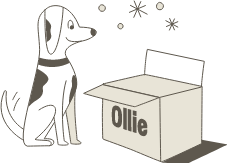
The nutrition your dog needs,
the food they want.

Enjoying our articles? Subscribe our Newsletters and get new articles directly to your inbox
You might also like
18 July 2025
6 MINS READ
Can You Mix Fresh Dog Food With Kibble?
If you’re feeding your dog kibble but want to upgrade their bowl, you’re not alone. Many pet parents ask if they can mix fresh dog food with kibble to get some of the benefits of fresh food wi…
by Ollie Pets
18 July 2025
5 MINS READ
Does Fresh Dog Food Help With Weight Loss?
If you’ve noticed your dog carrying a few extra pounds, you’re not alone. According to the Association for Pet Obesity Prevention, over half of dogs in the U.S. are overweight or obese. Extra …
by Ollie Pets
18 July 2025
4 MINS READ
Is Fresh Dog Food Cooked or Raw?
When you hear “fresh dog food,” it’s normal to wonder if that means raw meat or something cooked. After all, fresh just means it’s not dry kibble or canned food packed with preservatives. …
by Ollie Pets
